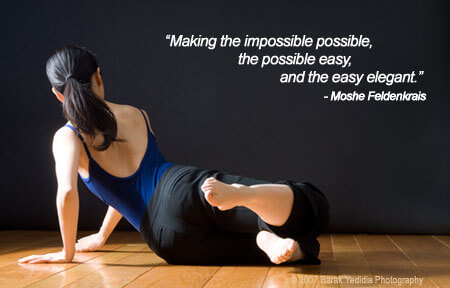
Why I keep working with an expert movement practitioner long after the injury is healed
Yesterday I went up to central London for a regular session with my Feldenkrais practitioner. I first started working with them over three years ago (see the post: “What I learned from a master practitioner” as a result of an acute injury that was not easily healed and fixed. That article was written about 10 months after I first went for Feldenkrais after a bad ankle injury was simply not getting better. It took the patience of a master to work with me over ten months to a point where not only was the original injury totally better, but they also totally fixed a decade old injury that had contributed to the more recent one.
That latter point was huge for me, the idea that they could address an old injury that I had regarded as chronic, as permanent. As I sit here writing this, I smile at knowing that I no longer have that old leg injury. With that in mind, having fixed an “unfixable” old injury, I decided back then to keep having regular Feldenkrais sessions every 2-3 months as there is always something to work on, something to improve. This inspiration was similar to the “making the impossible possible” that the founder, Moshe Feldenkrais, spoke of in the quote in the image above, yet I find, as time passes, that most of what we work on is to make “the possible easy”. That full quote is:
Making the impossible possible, the possible easy, and the easy elegant
Moshe Feldenkrais
I continue to work with my Feldenkrais expert as, through their work with me, it makes the possible easy for me, though it would be for others to say if it makes the easy elegant, though I’d note that I literally walk differently and with more ease and flow!
Oh, and yesterday I had no injury to work on, but I discussed what I was focussed on right now (improving my bike fitness) and so the expert recognised that they could spend that session working on my entire spine, every vertebra, to better connect and integrate them. Subtle changes, yet I certainly felt a powerful impact that will help me in any and all exercise and movement. Making the possible easy and the easy elegant, indeed!
At a mindset level, we would call this “Growth Mindset” (one of many posts referencing this is here). At a physical level, whilst we cannot defy mother nature as we age, we can, in many and real ways, “de-age” by focusing on improving ourselves physically. For myself, I know I am far stronger now than when I started Pilates a decade ago, plus with Feldenkrais my body, my movement is far more integrated so can use that strength in a balanced and sustainable way. Elite athletes use the term “continuous improvement”. This personal example is all about continually seeking to improve at an individual level.
Parallels to having an expert help you in business
Now, if you have got this far, please stay with me for a parallel around working with an expert for yourself and your business. Using my own experience, I am often brought in at a pivotal point where clients feel they would benefit from my outside support to take them through that stage to “what’s next”. In some cases, they then think to themselves: “that was great, but now I can do this myself” and our engagement comes to an end.
Such a response is rational and common, but what about the other choice, to continue? I currently have a client relationship with a senior leader where we are in the fourth year of working together. That client is always looking for continuous improvement, to improve, to grow. That is why we are still working together, and the longer the relationship goes on, the more we can speak in shorthand, as countless hours of past conversation means that we can draw out the actionable insights they need at a speed that is far faster and with an ease that is far smoother than in early months of the relationship.
In that client example, we are a long way past the “making the impossible possible”, we focus on making “the possible easy and the easy elegant”.
So, when you find someone as an expert to work with you and your business, you can engage with them only as long as you need to for the current “acute” project or focus, or you can complete that then keep working with them for the long term.
Which choice do you make? (I know which I recommend!)
